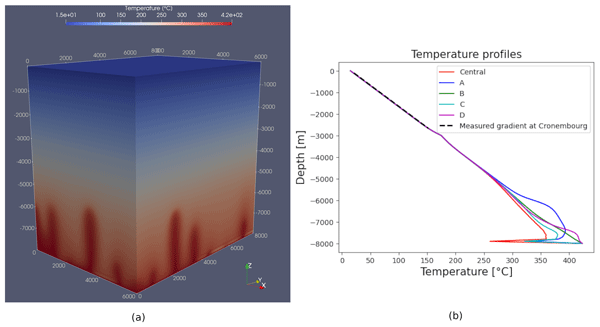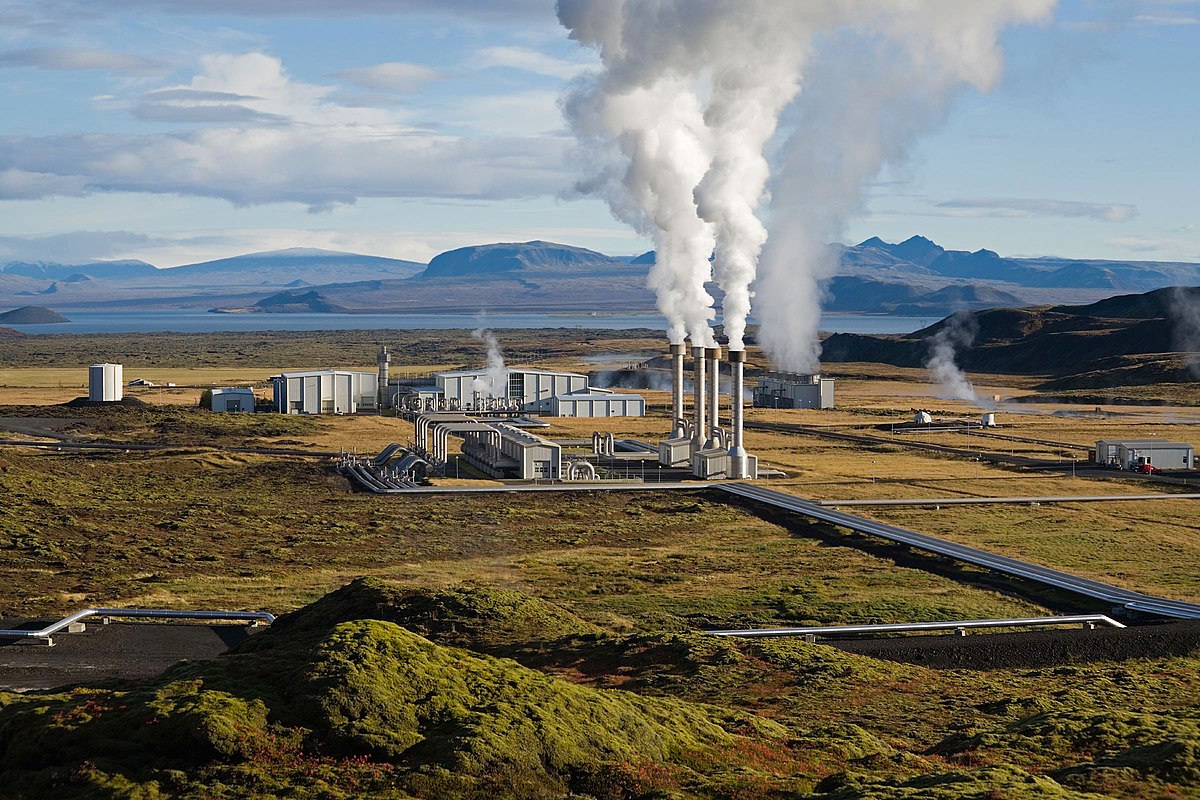The Vendenheim deep geothermal project, located near Strasbourg, was halted in late 2020 following significant seismic events, including a magnitude 3.9 earthquake that occurred six months after operations ceased. Strikingly, some of the seismic activity was detected as far as 5 kilometers from the site’s wells—raising questions about what exactly caused these unexpected events.
To get to the bottom of it, DT-GEO researchers built a large-scale 3D model of the site, covering an area of 8 km × 8 km × 6 km. Using the MOOSE/GOLEM simulation platform and integrating public data from the GEORG geological framework, the team recreated the natural hydrothermal conditions beneath the surface. Their goal? To simulate how heat flows and identify patterns that could explain the seismic behavior observed.

Temperature distribution model with a convective regime in the granite and a conductive regime in the sediments.
The results are eye-opening. The simulations revealed that the site’s granite layer is home to hydrothermal convection—a process where heat circulates through fluids—while the sedimentary layers above it primarily conduct heat. Interestingly, the seismic events were concentrated at a depth of around 5 kilometers, right at the boundary between these two thermal regimes. This suggests that the interaction between these layers could play a role in triggering earthquakes during geothermal operations.
This research highlights the value of advanced modeling for understanding the complex interplay between geothermal energy production and subsurface conditions. By providing a clearer picture of what’s happening below the surface, the study paves the way for safer and more sustainable geothermal projects—not just in Vendenheim but around the world.
The study’s findings mark an interesting step forward for the DT-GEO research, which focuses on using cutting-edge simulations and data analysis to improve geohazard prediction and mitigation. As Europe pushes forward with renewable energy initiatives, understanding and managing risks like those uncovered at Vendenheim will be key to understanding the full potential of geothermal energy.
Citation
Abreu-Torres, J., Hutka, G., Blöcher, G., Cacace, M., Magnenet, V., and Schmittbuhl, J.: Large-scale reservoir modeling of the Vendenheim geothermal site (France), Adv. Geosci., 65, 117–125, https://doi.org/10.5194/adgeo-65-117-2025, 2025.
Read the full study here.



